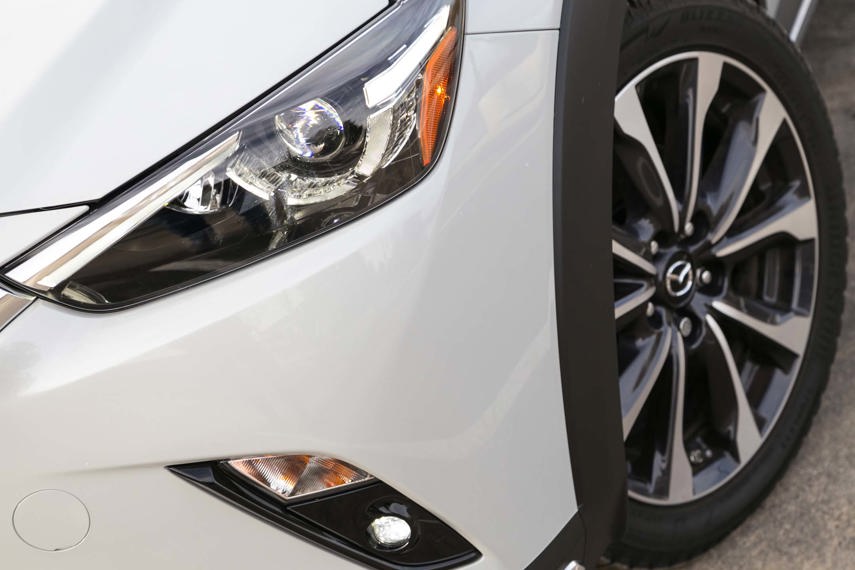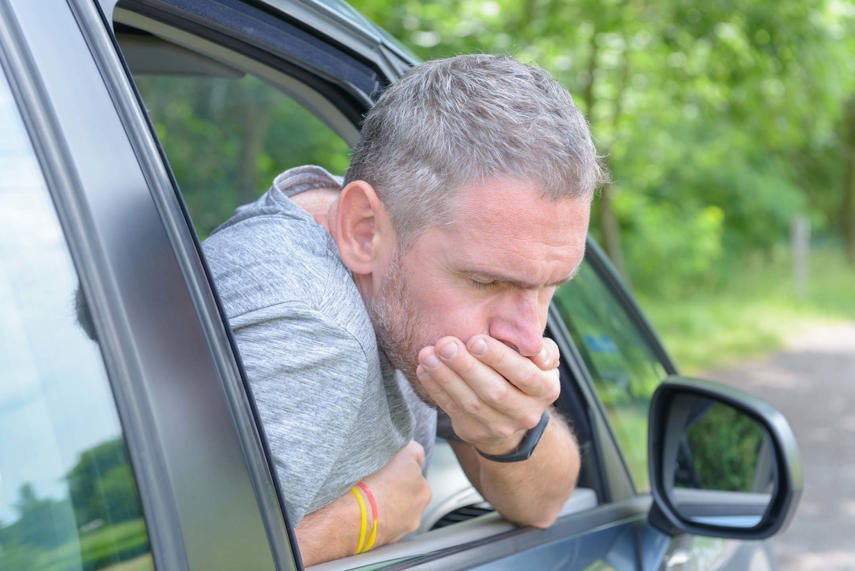The symptoms of motion sickness are pretty recognizable – headache, dizziness, nausea, and an overall awful feeling of unease and fatigue. There are a variety of reasons it happens, but they mostly have to do with disruptions to the multiple ways human bodies interpret motion.
Typically, input from your eyes, ears, and even your skin are managed by your brain to say, “Yes we’re moving,” making everything feel fine. However, when the inputs are muddied or distorted, then you may get motion sickness.
For example, sitting in the rear seat of a car, you get the feeling the car is moving forward, but since you can’t see the direction you’re going, the brain gets an incomplete idea of what’s going on around you. Additionally, the up and down motions from a bumpy road or soft suspension, as well as side-to-side body roll from a windy route, can result in even more muddy messages being sent to your brain, leading to motion sickness.
Reading while in a car is a common trigger for motion sickness: as your eyes move across a page, your body is moving in a different direction, triggering yet another imbalance and more motion sickness. Another issue popping up in cabins today are handheld devices like phones and tablets. Having your head down looking at these screens while in motion can lead to even faster onset of motion sickness.
Passengers tend to get motion sickness more than drivers since they receive an obstructed view of where the vehicle is going, nor can they anticipate the motion of the vehicle, unlike the driver. This may cause a significant issue in the future with more automakers looking to develop autonomous vehicles that make everyone a passenger.

Automaker Support
Automakers have been trying to prevent motion sickness with varying degrees of success. Some changes have led to significant changes in vehicle design. For example, Ford found that moving infotainment and entertainment screens higher up on the dash helps to bring the passenger’s eyes to the horizon and front of the vehicle, preventing motion sickness. Many other automakers are following this design, which is one reason you may see so many infotainment screens on top of the dashboard.
Mazda puts a lot of effort into making its vehicles feel more natural. “Mazda focuses our ride and handling development around human balance,” said Dave Coleman, Vehicle Dynamics Manager at Mazda. “Our goal is to make the car feel like an extension of the driver’s body,” he said, adding “if you make the car move in a natural, organic way that satisfies the balance centre of your brain, that also fixes the causes of motion sickness.”
The automaker researched the human body paying particular attention to elements like posture, eyes, and how the brain interprets motion; and changed various aspects of its new cars to better support the people who drive their cars. They redesigned their seats to promote a more natural, upright position, shaping your spine in an S rather than a C like when you’re slouched in a chair. “This more active seating position helps you naturally, subconsciously balance as the car moves you around,” Coleman said.
He also explained that they found it essential to align what your eyes see with what your inner ear feels. “As you drive into a corner, we’ve found it very beneficial to make sure your eyes see the vehicle body roll a fraction of a second before your inner ear feels the lateral G forces.” This is a major part of the brand’s G-Vectoring Control, which was designed to improve the handling feel of Mazdas by cutting a minute amount of engine torque when there’s a steering input. The by-product of that is a more natural-feeling car: it pitches forward a tiny bit when the driver turns the wheel, which gives the body a warning that you’re in motion and can be expecting a turn. This tiny bit of feedback while driving helps to mitigate motion sickness, even for passengers too.
One last area where the automaker tapped into human behaviour is braking. “When we walk, our heads bob up and down, but the brain filters that motion out,” explains Coleman. There’s a certain threshold to motion that the brain can filter out. When braking, a car pitches forward a bit, so the automaker tried to reduce the amount of front-end dive on its vehicles to fit within that threshold.
Don’t mistake this all for suggesting that more body motion leads to less motion sickness, it’s just that not all body roll in a vehicle is bad.
Motion sickness is a pretty big concern as automakers begin to develop autonomous vehicles. As a result, many solutions are being explored and researched. One idea is to use the screens and apps in the cabin of the vehicle to simulate motion with constantly scrolling backgrounds that are synced with the speed of the vehicle. Other concepts include redesigned seats that enforce good, active posture to reduce motion sickness in passengers. Since self-driving cars have yet to hit the mainstream, and still have a long way to go before being road-worthy, it might be a while before we see a proven solution for motion sickness in autonomous vehicles.

How to Prevent Motion Sickness
Despite all the changes in modern vehicles, people are still getting motion sickness. If you or a passenger are vulnerable to bouts of motion sickness, here’s what you can do:
Look Towards the Horizon
Especially in a moving vehicle, looking in the same direction as it’s heading will help to reorient your body. Sitting backwards in a vehicle can also cause motion sickness, so be sure to face the right direction.
Open a Vent or Window
The sensation of air blowing from a vent or the fresh air from an open window helps to relieve sensations of motion sickness.
Close Your Eyes/Nap
This is obviously for passengers (and drivers who can live without conversation and media at full volume) but closing your eyes can help mitigate the feelings of motion sickness. Did you know drowsiness is also a symptom of motion sickness?
Chewing Gum
Some have found success in chewing something, like gum, to mitigate motion sickness. Others recommend taking some ginger before a trip.
Avoid Heavy Foods, Alcohol
It can be hard to avoid greasy fast food on a road trip, but foods high in salt, protein, and calories – even dairy – can worsen motion sickness. Alcohol is another culprit, and can also interact with medications like those mentioned below.
Medicine
If you’re going on a longer trip, it might be worthwhile to pick up some over-the-counter medication like dimenhydrinate (e.g. Gravol, Dramamine) or diphenhydramine (e.g. Benadryl) an hour or so before your trip – some are pills, while others are wearable patches. Be sure to consult with a doctor or pharmacist before using these medications, and to carefully consider their side effects, which often include drowsiness – not ideal if you’ll be called upon for driving duty.
If you consistently suffer from severe motion sickness, there are also prescription medications available that can better address the symptoms.

